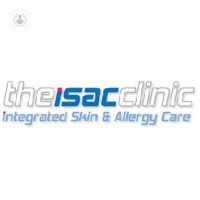Sun allergy
Dr Pamela McHenry - Dermatology
Created on: 11-13-2012
Updated on: 03-28-2023
Edited by: Aoife Maguire
What is photosensitivity?
Photosensitivity, commonly known as sun allergy, is the skin’s reaction to sun exposure. Symptoms may be different to other dermatological issues. Among the most common reactions, the following stand out:
- Polymorphic light eruption (PLE): this is more common in women and people who have fair skin, but it can also affect men and people with dark skin. It appears as lumps and bumps a few hours after sunbathing. It is most common on the face and neckline, but can also affect the back of the arms and the legs.
- Solar urticaria: this is less common than PLE, it tends to appear as large hives, similar to an insect bite. It affects both men and women and can appear on any area of the body. It appears minutes after exposure to natural sunlight or artificial light.
- Actinic prurigo: this is a rare reaction to sunlight in which the skin thickens and tends to affect the elderly.

What are the symptoms?
The main symptoms of sun allergy are itching, pain and skin redness that tend to appear a few hours or days after exposure. Some less common symptoms may appear, such as headache, nausea or chills.
Causes of photosensitivity
The causes for photosensitivity remain unknown, although it is known that symptoms appear when there is prolonged exposure to UVA and / or UVB rays (particularly in spring and summer). It is one of the main primary idiopathic photodermatoses.
How can it be prevented?
To prevent sun allergy it is very important to protect your skin with sunscreen and wear appropriate clothing. People with sensitive skin are recommended to avoid using perfumes, deodorant, and cosmetics when in the sun.
What is the treatment?
Treatment for photosensitivity mainly focuses on protecting yourself from the sun, although in more severe cases you may be prescribed antihistamines, corticosteroids, or antimalarials.






